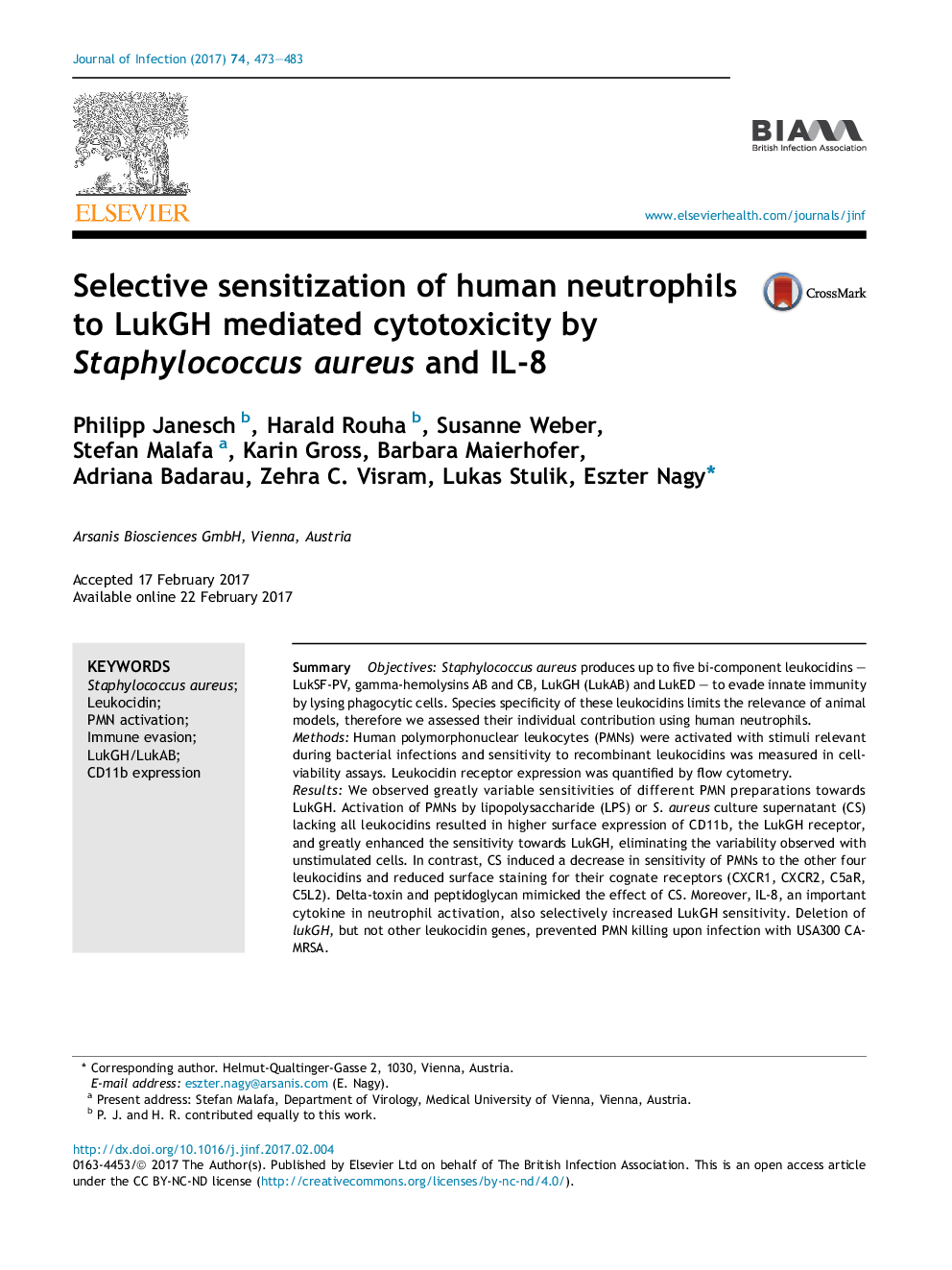| Article ID | Journal | Published Year | Pages | File Type |
|---|---|---|---|---|
| 5668700 | Journal of Infection | 2017 | 11 Pages |
SummaryObjectivesStaphylococcus aureus produces up to five bi-component leukocidins - LukSF-PV, gamma-hemolysins AB and CB, LukGH (LukAB) and LukED - to evade innate immunity by lysing phagocytic cells. Species specificity of these leukocidins limits the relevance of animal models, therefore we assessed their individual contribution using human neutrophils.MethodsHuman polymorphonuclear leukocytes (PMNs) were activated with stimuli relevant during bacterial infections and sensitivity to recombinant leukocidins was measured in cell-viability assays. Leukocidin receptor expression was quantified by flow cytometry.ResultsWe observed greatly variable sensitivities of different PMN preparations towards LukGH. Activation of PMNs by lipopolysaccharide (LPS) or S. aureus culture supernatant (CS) lacking all leukocidins resulted in higher surface expression of CD11b, the LukGH receptor, and greatly enhanced the sensitivity towards LukGH, eliminating the variability observed with unstimulated cells. In contrast, CS induced a decrease in sensitivity of PMNs to the other four leukocidins and reduced surface staining for their cognate receptors (CXCR1, CXCR2, C5aR, C5L2). Delta-toxin and peptidoglycan mimicked the effect of CS. Moreover, IL-8, an important cytokine in neutrophil activation, also selectively increased LukGH sensitivity. Deletion of lukGH, but not other leukocidin genes, prevented PMN killing upon infection with USA300 CA-MRSA.ConclusionInflammatory signals enhance the susceptibility of human PMNs to lysis by LukGH rendering this toxin dominant among the S. aureus leukocidins in vitro.
